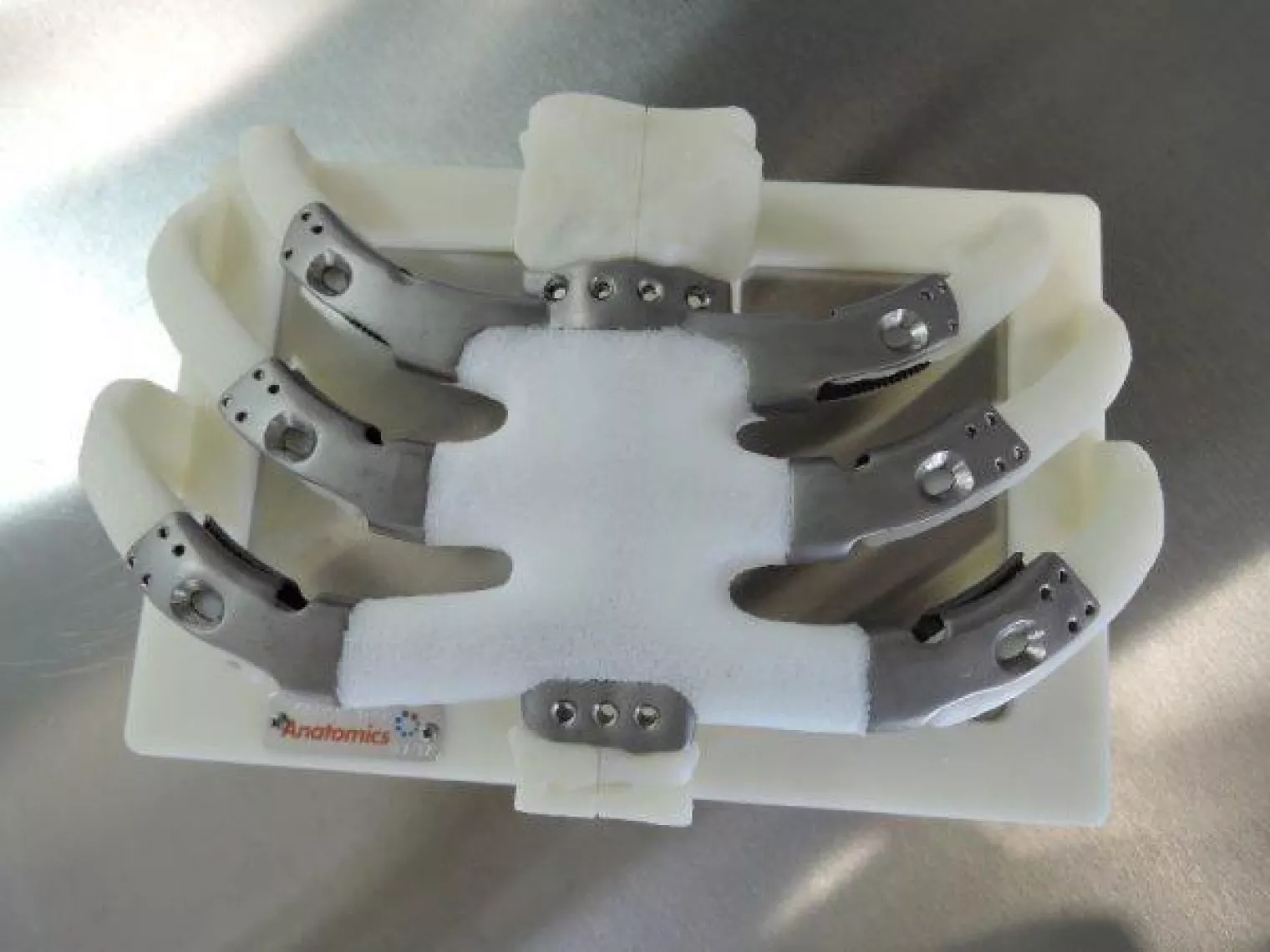3D printing has proven to be useful in many sectors, but especially in the medical field, 3D printing can open many doors. In this article, we’ll be talking about different applications of 3D printing in healthcare, from being a useful tool during pre-operative planning to the possibility of creating custom implants and prosthetics.
3D Printing Applications in Healthcare:
-
Pre-operative planning
-
Education and training
-
3D custom implants
-
Medical device prototyping
-
Custom devices and prosthetics
Patient-Specific Anatomical Models for Pre-Operative Planning
Medical imaging using 2D or 3D onscreen technology provides limitations when radiologists and surgeons are visualizing complex pathologies and abnormalities.
Increasingly, both radiology teams and surgeons are using 3D printing to create 3D 1:1 models of anatomical areas, replicated from patient scans, which can be held in-hand and used for pre-operative planning, case rehearsal, and collaborative teamwork.
These anatomical models are also used in patient communication and consultation to show and explain to patients their medical conditions and what their surgical procedures will involve.
They are also beneficial for surgical education, providing medical students, junior doctors, and residents the opportunity to exactly see tumors, fractures, lesions, and other unique abnormalities.
Education and Training
There is an increasing body of research on the benefits of using 3D printed anatomical models in an educational setting.
One of the key differences in using 3D models versus standard anatomical models is the ability to 3D print specific anatomical pathologies leading to more realistic learning.
In contrast to learning through the use of cadaver material, 3D printed anatomical regions also ensure each trainee is using the same pathology during instruction, therefore, standardizing the learning.
Here is a range of studies looking at the impact of 3D printing as teaching aids:
-
From medical imaging data to 3D printed anatomical models. Department of Medical Physics and Biomedical Engineering, University College London, United Kingdom.
-
Hands-on surgical training of congenital heart surgery using 3-dimensional print models. Hospital for Sick Children, University of Toronto, Toronto, Ontario, Canada.
3D Custom Implants
Models of the patient’s anatomy can be used to support making a standard implant customized (e.g. bending plates, sizing stents). Custom implants, also known as ‘patient-specific implants’ or PSIs are used by surgeons in complex cases where a standard implant is not appropriate for the case. These implants are designed and made for an individual patient, tailored to their anatomy and surgical needs.
The advent of 3D printing has enabled these custom implants to be created more quickly and reduce manufacturing costs.
You can find more information about custom implants in this paper reviewing the use of custom implants.
Medical Device Prototyping
Used for many years in manufacturing, 3D printing is currently revolutionizing medical device prototyping.
Now, small and large companies alike can rapidly design, test and engineer multiple device prototypes in days or weeks rather than months or years.
The ability for a product designer to see their physical design in hours rather than months has increased the rate of testing, adapting and fine-tuning the most effective functions.
This reduced development lifecycle of devices reduces the overall cost, increases the number of test periods, leading to iterative improvements and increased device safety, and ultimately gives the company a competitive advantage.
When a design has been finalized – depending on the expectation for future product adaptation requirements – tooling can be traditionally manufactured or can be 3D printed.

Custom Devices and Prosthetics
Over a lifetime, the human body is subject to a huge amount of wear and tear, whether this is a natural occurrence through aging or disease or brought on by an external force (such as a traumatic collision). At some time in our lives, the majority of us will require a custom device to help us regain our normal functions.
One of the most common uses for custom devices is in the creation of individual prosthetics used to replace limbs. In the United States alone, there are over 2 million amputees that all require custom prosthetics.
This matched with the growing availability of 3D printing has sprouted a number of companies and non-profit organizations, making use of 3D printing to produce parts to improve people’s standard of life.
One of earliest was the e-NABLE Community made of a network of volunteers across the world all devoting time and engineering resources to create free 3D printed prosthetics.
This ‘lower cost approach to a highly valued item’ ethos has made its way into a number of commercial entities, with Handsmith and Open Bionics both adding bionic capabilities to their custom devices.
Patient-Specific Medical 3D Models by Axial3D
At Axial3D, our goal is to make patient-specific surgery routine. This is made possible with our medical 3D visualizations and printed models. We create 3D visuals of patient anatomy with our cloud-based Segmentation-as-a-Service platform and 3D print them in our in-house Stratasys print lab. We also provide 3D print-ready files that can be output into a hospital’s print lab. To discuss how 3D modeling would help your organization and try our 3D solutions, consult our experts to learn more.



